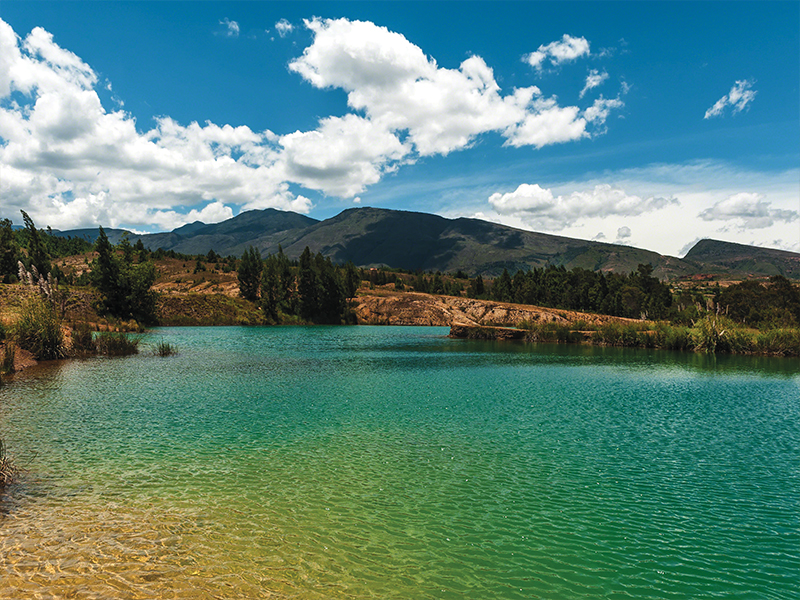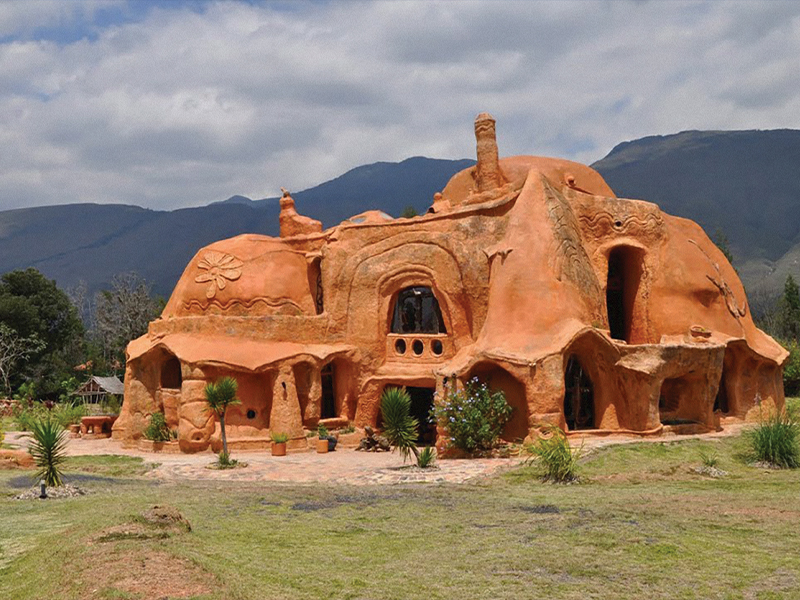Villa de Leyva, a municipality located in the department of Boyacá, Colombia, is a tourist destination that combines natural beauty with a rich colonial history. With its cobblestone streets, houses with period architecture and impressive landscapes, this picturesque town has managed to preserve its historical and cultural charm over the years. To get there, just go to Bogotá, rent a car or board a public service from that city's transportation terminal and travel 94 miles north. To access Villa de Leyva on this route from the Colombian capital, it is necessary to cross the most beautiful panorama between green mountains and multicolored landscapes. On the route you will also find historical sites of great relevance. The most important is the Boyacá Bridge, the place where one of the most important battles of Colombia's independence was fought. This site commemorates the victory of the Colombian army over the Spanish troops and is a sacred place for Colombians.

The natural beauty of Villa de Leyva is simply captivating. Surrounded by mountains and valleys in the best of climates, the landscape that surrounds the town is a spectacle to behold. Walks in the surrounding area offer the opportunity to enjoy the local flora and fauna, as well as beautiful panoramic views. In addition, the area has natural parks such as the Iguaque National Natural Park, where you can go hiking, explore the cloud forests, crystal clear lagoons, appreciate and enjoy the wide range of birds that visit it.
But not only is nature impressive in Villa de Leyva, but also its history. This town is one of the best preserved colonial treasures in Colombia. Its cobblestone streets and houses with colonial architecture transport visitors to times of the past. The Plaza Mayor, one of the largest squares in Latin America, is the heart of the town and is surrounded by historic buildings, such as the Nuestra Señora del Rosario church, the House of the First Congress, and the Antonio Nariño House Museum. The latter was the home where the independence hero Antonio Nariño lived, and now it is a museum that shows local history and culture.
Another highlight is the Terracotta House, an incredible work of architecture built entirely of clay and other natural materials. This home is one of a kind and has been recognized worldwide for its innovative and sustainable design.

The Moniquirá Archaeological Park, also popularly known as "El Infiernito", is a pre-Columbian site located 5 kilometers from the urban area of Villa de Leyva. It is a lithic monument that, according to archaeological research, is at least 2,200 years old. For some anthropologists, this site was intended for fertility cults and rituals; For others it was an astronomical observatory that indicated the beginning of the summer and winter seasons.
Villa de Leyva is full of fossils that were once marine organisms that lived during the Cretaceous period (began 145 million years ago and ended 65 million years ago). At that time the sea covered a large part of the Colombian territory, including what is now Villa de Leyva. In the community museum, you can see the largest and most complete fossil found in South America.

In addition to its beauty and historical wealth, Villa de Leyva is also famous for its festivals and cultural events. The Kite Festival, held annually in August, is one of the most popular events. During this festival, the streets and main square are filled with colorful kites flying through the sky, creating an impressive spectacle.
Villa de Leyva is a tourist destination that combines natural beauty with a rich colonial history. Its stunning landscapes, cobblestone streets and colonial houses transport visitors to times gone by, while its festivals and cultural events provide a unique experience. Whether you are looking to enjoy nature, explore history or simply relax in a charming environment, Villa de Leyva is the perfect place to do so. There is no doubt that Villa de Leyva is a historical and natural treasure that deserves to be explored and appreciated by all those seeking to immerse themselves in the beauty and cultural richness of Colombia.
Oscar Arenas
Editor





